
Knowing How to take the Wheel: Mr. Luis Gerardo Garcia and his Journey to Become a Good ZBrush Artist
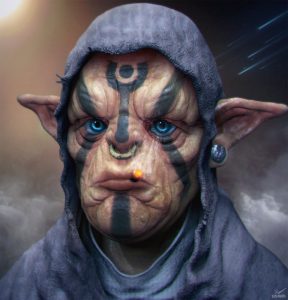 Most of the time, we are afraid to take the wheel to control our own lives. More often than not, we let others control us. And then one day, we wake up not knowing where you’re heading and totally disengaged and estranged from your own dreams.
Most of the time, we are afraid to take the wheel to control our own lives. More often than not, we let others control us. And then one day, we wake up not knowing where you’re heading and totally disengaged and estranged from your own dreams.
This Mr. Luis Gerardo Garcia had learned to steer clear from. He got to his feet and decided that he will not listen to naysayers and people who know nothing of his own craft.
Much of this wisdom can be seen through his efforts to become a good artist. He had come to his own by learning the ropes on his own. Now, we can marvel at his art pieces–they are indeed noteworthy and indicative of the rich knowledge not only in ZBrush but the inner workings of the whole industry altogether.
Xeno Creatives (XC): We understand that Zbrush technology had been quite an innovation in the industry. And unlike producing visual art by pencil and ink on paper, much technical know-how is required for the software. What processes did you have to learn to be skilled in Zbrush? As a dedicated artist, how does this help you progress further in your craft?
Luis Gerardo Garcia (LGG): Most of the processes applied to ZBrush came from traditional mediums. In this case, I think digital sculpting is easier for people that already have traditional sculpting and artistic skills. But if you are willing to go digital all the way, you can also learn about it, you have to think this as a skill, the more you study and practice the better and faster you get results. I had to train very hard as most artists do. I had to marry technical and artistic skills.
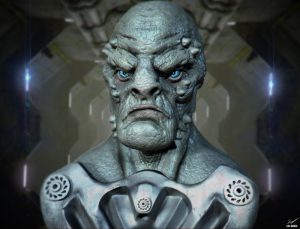 Anatomy is an essential topic you have to study if you want to succeed as a character artist and to get noticeable in this industry. This helped me to land different jobs and to produce several pieces not only in ZBrush but in other software as well. You need to decide quickly to get the job done faster; time is the key to efficiency in the industry.
Anatomy is an essential topic you have to study if you want to succeed as a character artist and to get noticeable in this industry. This helped me to land different jobs and to produce several pieces not only in ZBrush but in other software as well. You need to decide quickly to get the job done faster; time is the key to efficiency in the industry.
XC: How did your decision to pursue Zbrush come about? Would you want to expand to other media or do you want to just focus on it?
LGG: Well I started learning 3D when I was still a teenager. I first started with 3Ds max, then I learned ZBrush and totally loved it; it’s a 3d app where you can do almost every process in the character creation pipeline. I got my hands on ZBrush because I needed to achieve realism with my pieces. Also, because most of the people use this software since it’s in demand in the actual industry. It doesn’t matter how you achieve things in 3D, but you have to consider which software or processes are the standards. Most of the studios or big companies seek talents who are capable of using popular and reliable programs to produce digital art.
Right now I’m not only working as a character artist but also as a CG artist. I’ve been involved in Arch Viz projects, 3D printing and rendering projects in general and realized so the more you know, the better you’ll understand the pipeline used these and you will not only produce sculpting work but also other types of works in digital art.
 XC: Is it integral for you to be masterful in human anatomy when working with Zbrush?
XC: Is it integral for you to be masterful in human anatomy when working with Zbrush?
LGG: Yes, the more anatomy skills and knowledge you have, the more fluent and confident you will be. One artist once told me, “To be successful in anatomy you won’t have to learn muscle names or fancy stuff; you just need to watch references to train your eye of how muscles works”. I started learning more about muscles and the bony landmarks of the body and face. I got confident with myself to produce various pieces for personal and professional work. There will be certain scenarios where more in-depth knowledge of anatomy is required specially if you are sculpting the forms in motion, that’s when this type of skills comes handy.
XC: Do you see yourself lending your talents to the movie and television industry?
LGG: Yes I do. Maybe it will take more time to get in the bigger industry for films, but It’s something that I will love to do, since I get inspiration and motivation from the biggest blockbuster movies. My main inspirations are movies with lots of VFX and CG content. It forces me to achieve that kind of quality in my work.
XC: Were there other media that you explored? What were these?
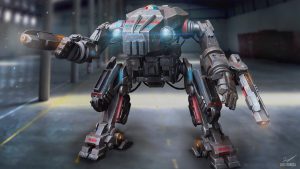 LGG: I started my journey by drawing digital portraits back in the day, learning all possible 2D stuff such as Photoshop, video editing, and so on. I liked it a lot but I realized I needed to go further. That’s when I decided to learn 3D and to decide which software would be good for me. And now I’m so happy that I decided to make that change because I really found what I love to do. It also let me know a lot of friends and skilled artists, make relationships with them, and also spread my work in digital platforms. That’s the one of the main ways you can start making noise and to get noticed by worldwide studios.
LGG: I started my journey by drawing digital portraits back in the day, learning all possible 2D stuff such as Photoshop, video editing, and so on. I liked it a lot but I realized I needed to go further. That’s when I decided to learn 3D and to decide which software would be good for me. And now I’m so happy that I decided to make that change because I really found what I love to do. It also let me know a lot of friends and skilled artists, make relationships with them, and also spread my work in digital platforms. That’s the one of the main ways you can start making noise and to get noticed by worldwide studios.
XC: Was delving into the craft really a passion to begin with or a mere necessity?
LGG: This is a hard question. I started on this journey because of passion. I always wanted to make something really cool in digital media and I knew I can do it, but I have known people who really began studying this for necessity, you know maybe if you start doing this as a hobby then you will end up doing this for a living.
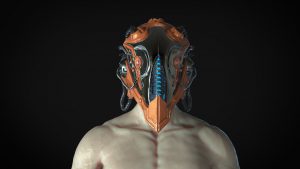 Life takes you to new expectations,. it’s constantly changing when you decide to make a start in this industry, and you will be surprised of how far you can get when you put a lot of work and dedication to your personal and professional portfolio.
Life takes you to new expectations,. it’s constantly changing when you decide to make a start in this industry, and you will be surprised of how far you can get when you put a lot of work and dedication to your personal and professional portfolio.
XC: Seeing your works on Facebook was quite a visual treat! Picking which our favorites are among them proved to be a challenge. Do you have favorite pieces? What are they and why?
LGG: I can call most of the pieces my favorite ones–not because of the level of quality on but because of the life that I was living that specific time. I remember the dedication I put on learning digital stuff and now that I’m comfortable with my level of skills, it’s when I enjoy the most, because I was part of that transition when I knew nothing and then I knew something about it. You will never stop learning, everyday it’s a new opportunity to learn more and to polish your skills.
XC: Who or what can you consider as your influences? What attracted you to them?
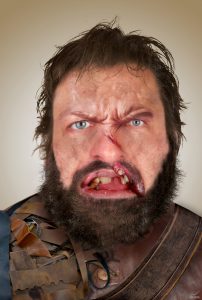 LGG: My influences are different artists around the world, My real first and most important influence is Daniel Hammonds he is a very good artist, a good friend, and good person altogether. He helped me out when I really started practicing and learning. Without him I wouldn’t be where I am today. Then I got many influences since then, such as: Raffael Grasetti, Glauco Longhi, Rafael Zabala, Frank Tzeng, and Daarken. I really loved their attention to detail and the works they have produced over these years in the film and games industry.
LGG: My influences are different artists around the world, My real first and most important influence is Daniel Hammonds he is a very good artist, a good friend, and good person altogether. He helped me out when I really started practicing and learning. Without him I wouldn’t be where I am today. Then I got many influences since then, such as: Raffael Grasetti, Glauco Longhi, Rafael Zabala, Frank Tzeng, and Daarken. I really loved their attention to detail and the works they have produced over these years in the film and games industry.
XC: What other pieces do you want to create?
LGG: Right now I’m really digging animation and rigging of creatures and characters and want to expand my skills in these areas. So maybe my next pieces will be focused mainly in modelling assets for rigging and animation.
XC: Aside from rendering your own amazing character concepts, do you also see yourself getting involved in Game Character Design?
LGG: Right now I’ve only created some characters. I know the process of getting them in game engines but not a big fan of making this for production, It’s a tedious and time-consuming process, but will love to get my hands dirty in game stuff soon.
XC: If you weren’t doing what you’re doing now, what do you think you’d be specializing in instead?
LGG: I can’t imagine myself in other situation, what I liked a lot when I was a teenager is Music. Maybe I would be producing cinematic music, it’s a type of music that I love a lot and I’m very respectful for the people that makes it.
XC: What advice or message can you give young aspirants wanting to enter the craft/industry?
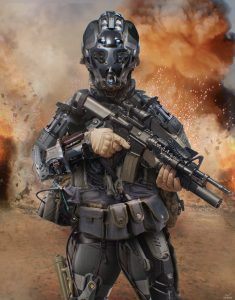 LGG: The main thing that you can do to start working or getting to know this industry is to produce art; you should do your best to get to know the people in the community and share your work on the internet if you want to get noticed.
LGG: The main thing that you can do to start working or getting to know this industry is to produce art; you should do your best to get to know the people in the community and share your work on the internet if you want to get noticed.
The internet is the biggest platform you can use to do it. Many recruiters seek for new talents everyday. Go out of your way to spend money on workshops to help bring out and discover your skills. You should study hard. Most important of all, don’t let other people decide for you, This happened to me back in the day, if you love something, do it. The support from your family is the biggest factor that makes you decide which path to take.
Indeed, we admire Mr. Luis Gerardo Garcia. he is an artist worthy of emulation as he sees beyond his own skills and his influences. He recognizes that the world, digital or not, is fertile grounds to plant your seeds and grow.
Want to see more of Mr. Gerardo Garcia’s works? Click here!

